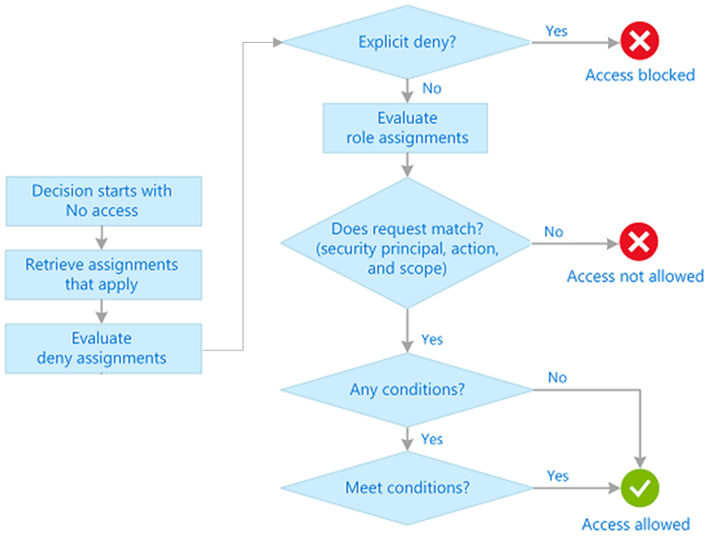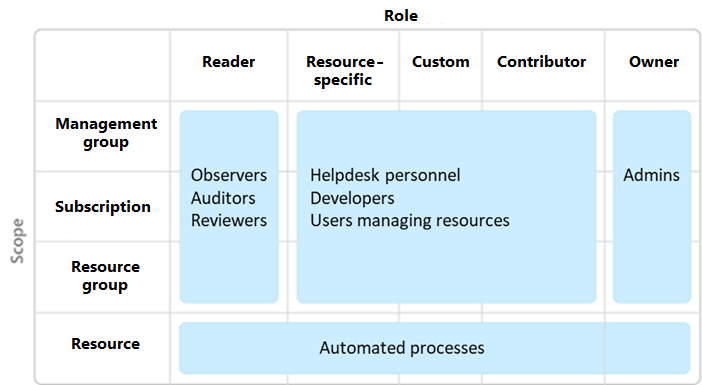Azure Role-Based Access Control (RBAC) allows you to manage access to Azure resources by assigning roles to users, groups, and applications.

- **Key Features:**
- **Role Assignments:** Grant specific permissions to users, groups, or applications.
- **Scope Levels:** Assign roles at different levels such as management groups, subscriptions, resource groups, and resources.
- **Least Privilege Principle:** Grant users the minimum permissions they need to perform their tasks.
- **Custom Roles:** Create custom roles if built-in roles do not meet specific needs.
- **Additive Model:** Effective permissions are the sum of all role assignments.
- **Design Considerations:**
- **Role Definitions:** Clearly define each role and its permissions.
- **Group Assignments:** Assign roles to groups rather than individual users for easier management.
- **Policy Integration:** Use Azure policies alongside RBAC for effective access control.
- **Overlapping Roles:** Be aware of overlapping role assignments and their cumulative effect.
